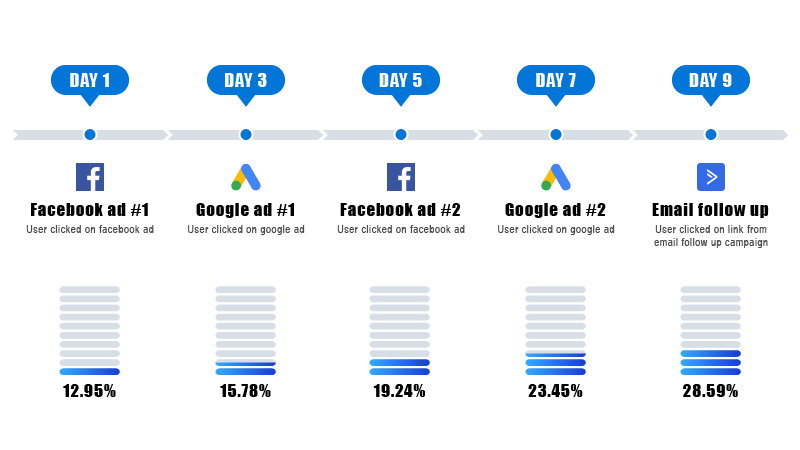The time decay attribution model is a very interesting modification of the linear model.
This model not only takes into account all touch points in the customer journey, but it also uses an algorithm that weights in each click:the highest percentage of credit is awarded to the touchpoint that is closest in time to the conversion.
The remaining touchpoints and/or clicks would receive less credit as they are further away from the time of conversion. Also, the further away a touch point is from the conversion, the more its credit “decays”.

Let’s take the example above and run the algorithm. Using the time-decay model, the attribution value would look like this:
- 12.95% of the conversion is attributed to Facebook ad #1
- 15.78% of the conversion is attributed to Google AdWords ad #1
- 19.24% of the conversion is attributed to Facebook ad #2
- 23.45% of the conversion is attributed to Google AdWords ad #2
- 28.59% of the conversion is attributed to Email Follow up
The time-decay model is recommended for analyzing most marketing campaigns and funnels. It’s especially useful for businesses that want to decrease the length of their conversion journey – get visitors to convert sooner.
